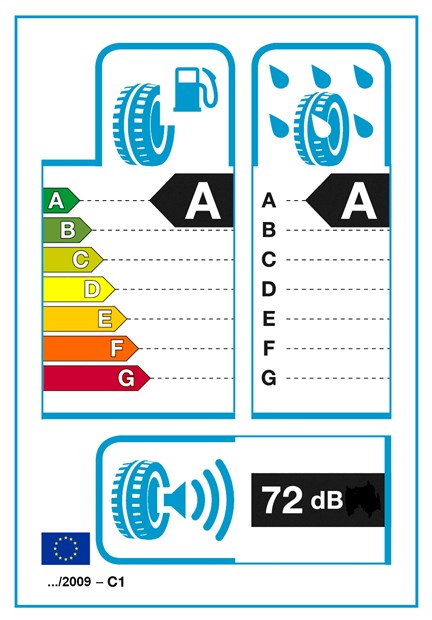There’s a new system for labelling tyres and you all need to know about it.
Following an EU directive, as of 1 November this year all tyres must carry a label with three bits of information on it.
In an effort to improve safety, reduce CO2 emissions and lower traffic noise levels, the labelling must be visible on the tyre or shown to the customer at the point of sale. The information must also make it onto the invoice for said tyres.
1. Fuel efficiency
How much rolling resistance a tyre produces has a big effect on fuel economy. The tyre labels carry seven bands between A and G, and there’s a potential 7.5% fuel saving between the top and bottom bands. That equates to around 4mpg in a normal diesel car travelling at average speeds, so it’s not an inconsequential amount.
2. Wet grip
Again laid out in bands between A and G, the difference in wet grip levels between top and bottom bands is as much as 18 metres of braking performance from 50mph.
3. Noise
Measured at 7.5 metres from a car coasting at a set speed, noise levels are given both in dB level and by three black ‘waves’. Three waves means it’s 3dB or more below the EU noise limit which will be set for tyres in 2016.
Other information
The labels don’t cover wet cornering performance, dry braking performance or longevity. It’s best to talk to your tyre supplier about these issues to find out which is best for you.
How you can help
There are a number of things the driver can do to improve their tyres’ performance. For instance, making sure you’re driving as economically as possible is always going to help.
Keeping a safe distance to the vehicle in front will prevent unnecessary braking, further improving safety and reducing wear on your tyres and cars’ braking components.
Lastly, making sure your tyre pressures are correct on a regular basis will not only provide optimal fuel economy but will also ensure you remain as safe as possible in corners and during braking too.





